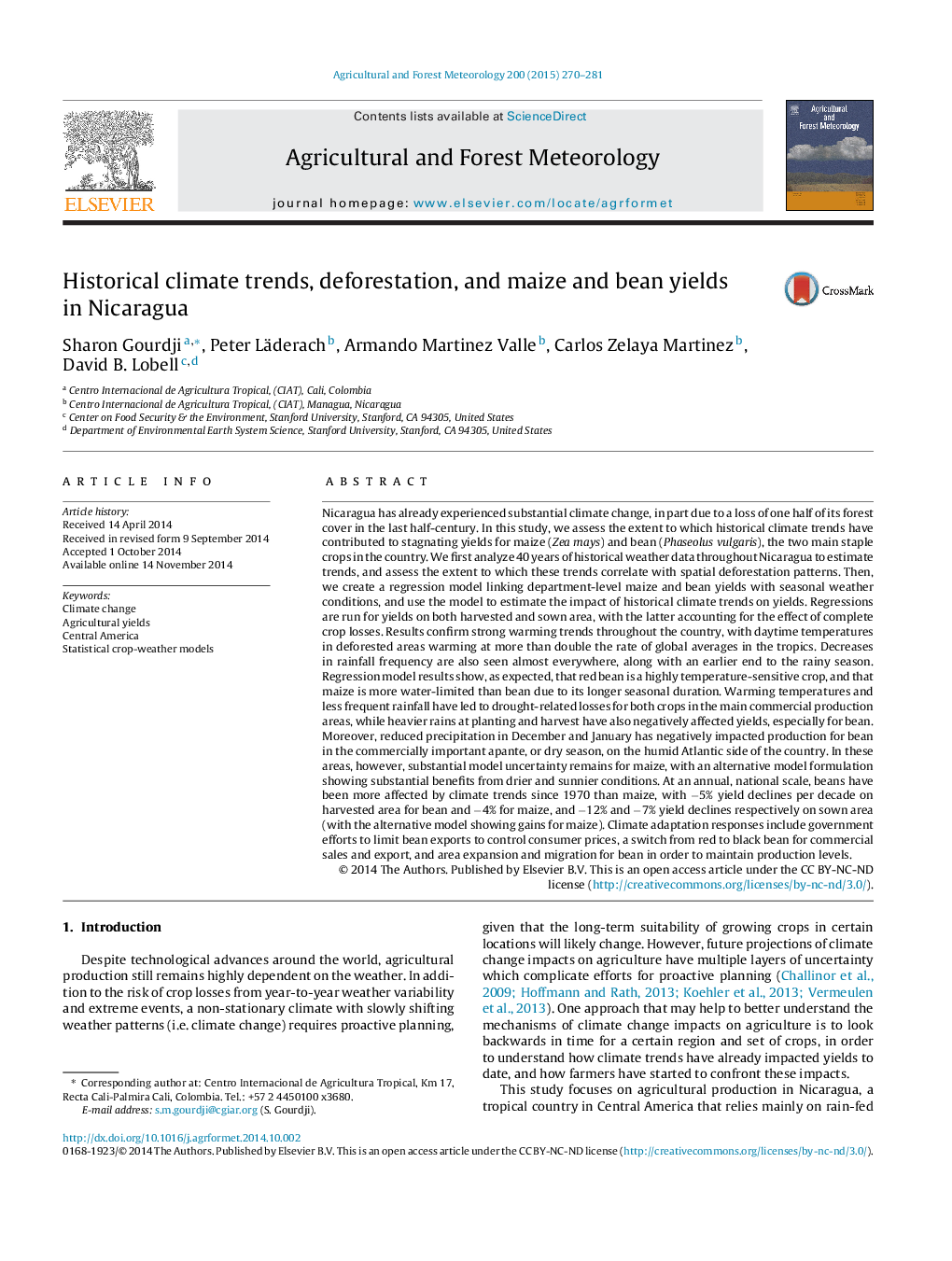| کد مقاله | کد نشریه | سال انتشار | مقاله انگلیسی | نسخه تمام متن |
|---|---|---|---|---|
| 6537478 | 158330 | 2015 | 12 صفحه PDF | دانلود رایگان |
عنوان انگلیسی مقاله ISI
Historical climate trends, deforestation, and maize and bean yields in Nicaragua
ترجمه فارسی عنوان
روند نزدیکی جوامع تاریخی، جنگل زدایی و تولید ذرت و لوبیا در نیکاراگوئه
دانلود مقاله + سفارش ترجمه
دانلود مقاله ISI انگلیسی
رایگان برای ایرانیان
کلمات کلیدی
تغییر آب و هوا، عملکرد کشاورزی، آمریکای مرکزی، مدل های آماری برآورد آب و هوا،
موضوعات مرتبط
مهندسی و علوم پایه
علوم زمین و سیارات
علم هواشناسی
چکیده انگلیسی
Nicaragua has already experienced substantial climate change, in part due to a loss of one half of its forest cover in the last half-century. In this study, we assess the extent to which historical climate trends have contributed to stagnating yields for maize (Zea mays) and bean (Phaseolus vulgaris), the two main staple crops in the country. We first analyze 40 years of historical weather data throughout Nicaragua to estimate trends, and assess the extent to which these trends correlate with spatial deforestation patterns. Then, we create a regression model linking department-level maize and bean yields with seasonal weather conditions, and use the model to estimate the impact of historical climate trends on yields. Regressions are run for yields on both harvested and sown area, with the latter accounting for the effect of complete crop losses. Results confirm strong warming trends throughout the country, with daytime temperatures in deforested areas warming at more than double the rate of global averages in the tropics. Decreases in rainfall frequency are also seen almost everywhere, along with an earlier end to the rainy season. Regression model results show, as expected, that red bean is a highly temperature-sensitive crop, and that maize is more water-limited than bean due to its longer seasonal duration. Warming temperatures and less frequent rainfall have led to drought-related losses for both crops in the main commercial production areas, while heavier rains at planting and harvest have also negatively affected yields, especially for bean. Moreover, reduced precipitation in December and January has negatively impacted production for bean in the commercially important apante, or dry season, on the humid Atlantic side of the country. In these areas, however, substantial model uncertainty remains for maize, with an alternative model formulation showing substantial benefits from drier and sunnier conditions. At an annual, national scale, beans have been more affected by climate trends since 1970 than maize, with â5% yield declines per decade on harvested area for bean and â4% for maize, and â12% and â7% yield declines respectively on sown area (with the alternative model showing gains for maize). Climate adaptation responses include government efforts to limit bean exports to control consumer prices, a switch from red to black bean for commercial sales and export, and area expansion and migration for bean in order to maintain production levels.
ناشر
Database: Elsevier - ScienceDirect (ساینس دایرکت)
Journal: Agricultural and Forest Meteorology - Volume 200, 15 January 2015, Pages 270-281
Journal: Agricultural and Forest Meteorology - Volume 200, 15 January 2015, Pages 270-281
نویسندگان
Sharon Gourdji, Peter Läderach, Armando Martinez Valle, Carlos Zelaya Martinez, David B. Lobell,
